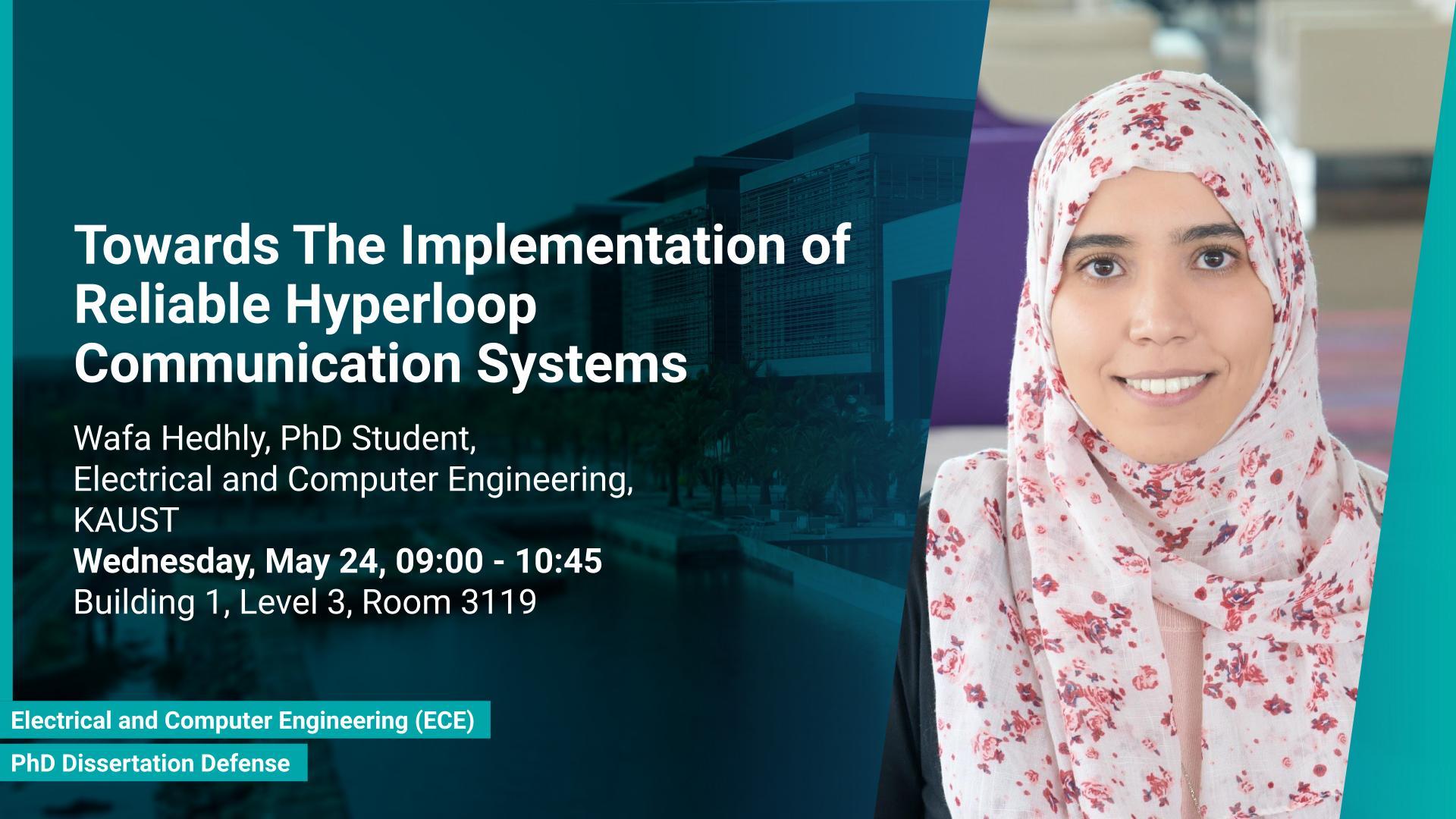Event Start
Event End
Location
Abstract
Flying train concept is shaping up. Hyperloop, also called vactrain transportation system, is becoming a reality, enabling super-sonic speeds and breeding immense advantages for people and freight transportation. This system exhibits a complex structure, integrating various technologies and moving at tremendous speeds inside an evacuated tube. Under these exceptional circumstances and unique scenarios, the communication system is expected to provide reliable connectivity to Hyperloop while dealing with several challenges. The adopted sealed steel-structured tube in the Hyperloop prevents signal penetration, isolating the inner world from the outside and creating a highly scattering environment for electromagnetic (EM) waves. Furthermore, the exceptionally high speed of the traveling pod results in severe Doppler shifts and frequent handovers, leading to increased transmission errors and delays. Thereby, this work is geared toward the design and analysis of reliable Hyperloop communication systems.
First, we overview and investigate different attributes of the communication system, including quality-of-service (QoS) requirements and critical challenges to implementing a reliable communication system.
Second, we propose a novel system configuration where wireless transmitters or access points (APs) are placed inside the tube to communicate with the moving receiver using optical fiber as a backhaul link. We implement intelligent reflecting surfaces (IRS) to leverage their merits in assisting wireless communications through beam steering and beat the unknown multipath-rich tube environment. We optimize the system parameters in terms of IRS positioning, IRS phase shifts and cells overlap distance to cope with cell coverage and handover rate limitations. The results showed that the constraints on the IRS in terms of scanning angles can be alleviated while achieving comparable performance in terms of cell coverage.
Third, we investigate the potential of implementing THz technology in Hyperloop, which proves to be particularly beneficial for the unique inner-tube environment. The detailed justifications and pathloss simulations demonstrated the suitability of THz radiation for Hyperloop wireless transmission. We propose to endow the pod transceiver with large intelligent surfaces (LIS) for signal transmission and reception in the THz band.
Last, we adopt queuing theory approaches to evaluate and gain insights into the performance of Hyperloop centralized network architecture. It is shown that the system deployment costs in terms of the number of APs and wireless transmission speed increase with the QoS requirements of the system. Accordingly, appropriate system choices can be concluded.
Brief Biography
Wafa Hedhly received the Telecommunication Engineering degree from the Higher School of Communications of Tunis (Sup’Com), Ariana, Tunisia, in 2017 and the M.Sc. degree in Electrical Engineering from the King Abdullah University of Science and Technology (KAUST), Thuwal, Saudi Arabia, in 2019, where she is currently pursuing the Ph.D. degree. Her research interests include Terahertz communications and Hyperloop communication systems.


